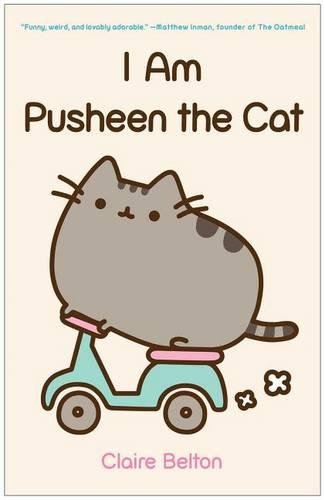
I Am Pusheen the Cat
کتاب های مرتبط
- اطلاعات
- نقد و بررسی
- دیدگاه کاربران
نقد و بررسی

September 30, 2013
After creating and maintaining a hugely popular online following for her loveable cat character Pusheen, Belton’s first book is a selection of comics from the Web series, plus some new content. The book is organized in an episodic, gag-style format, without a narrative but with occasional longer segments such as “A Year in the Life of Pusheen.” The artistic style is heavily borrowed from Japanese cartoons, most notably Hello Kitty. Due to the derivative style and lack of its own voice, the book has trouble finding its footing, both visually and tonally. Most of the jokes are fairly tired, such as a sequence depicting a New Year’s resolution failing to pan out or the endless Garfield-esque references to food consumption. The best gags employ antihumor, such as when Pusheen demonstrates fanciness by sporting a monocle and moustache and riding a unicorn. Still, it’s hard to overestimate the appeal of adorable cats on the Internet, where even the most familiar material will find an audience ready to soak in the cute.

January 1, 2002
The quiet desperation and the long perspectives of middle-American comfort provided the deftly handled and uncommonly moving subjects for Morris (1931-1997), who transformed them into laconic, well-crafted poems. Morris' first book, Green Business (1970), established his topics and tones: quatrains and terse trimeter columns described an unlived life of desks and whiskey, of "suburban work/ You are not suited to," where "Whatever you do/ Occurs at a distance." Later books added historical subjects and mordant puns, making for a body of work always restrained, mostly sad, and often quotable. "Archaeology" begins "Almost nothing mysterious is/ To be found./ This attracts us." "At Forest Lawn Cemetery" (in Los Angeles) ends with Morris' plans to visit, next, "the Homes of the Stars/ And the Universal Lot." Strong poems address lost and realized hopes which link grandfathers to fathers, and fathers to sons: "They are what I would keep/ Until I leave them." Such musings on mortality and nostalgia made Morris the closest American poetry could get to Philip Larkin. Morris published his last book of verse in 1987; he devoted his last years to Then, an unfinished memoir. Born to genteel parents of some wealth, Morris saw his father recede into mental illness; his mother remarried in New York City, then moved the family to upstate New York and (after his stepfather's death) to North Carolina, from which he entered a military school. Two complete chapters about Morris' childhood show fine writing, but little to make his life stand out; the less-polished chapter on military school (and on his adult service in postwar Korea) offers more surprises. The real power lies in the poems; this very handsome selection, with its substantial, convincing introduction from Vendler, should certainly broaden his group of admirers. As a set, the books land midway between an in-house tribute (Morris taught at Washington University) and a serious effort to relaunch a neglected writer.

























دیدگاه کاربران